Best Kitesurfing Spots in Hua Hin
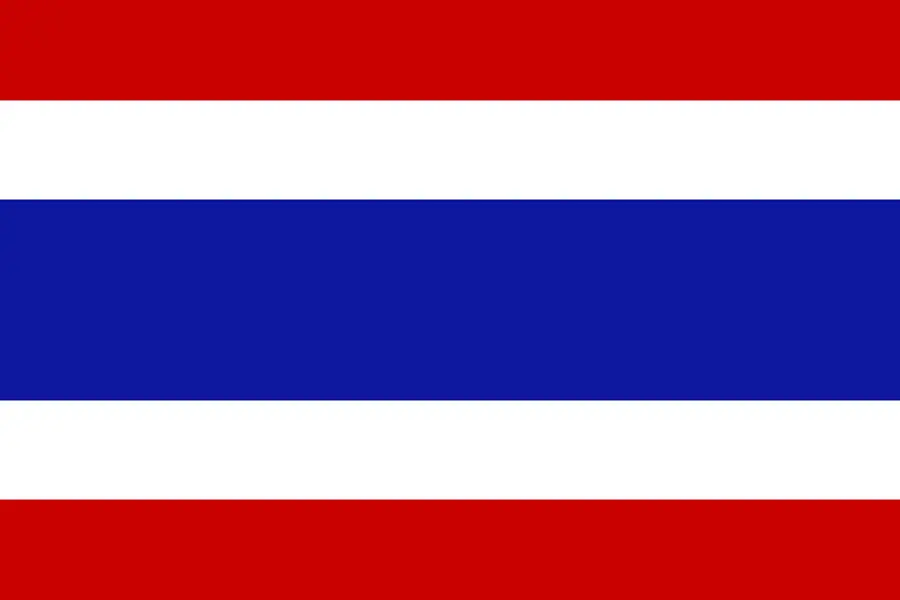
Hua Hin has some of the best kitesurfing places in Thailand. This applies to someone who flies for the first time or a person who goes after warm tropical seas often. From the popular KBA Surf Spot, which has reliable northeast breezes, to down winders toward Pran Buri, which have plenty of wind, every kiter will find something that fits his style – this guide will take apart the best kite spots in Hua Hin – it will explain seasonal wind patterns, tide tricks along with what equipment gets a person the most time in the air.
You will also find trusted kite schools, rental places as well as insider advice. That includes ways to launch during high tide and how to avoid jellyfish season. We will even show the best times to go and where to stay close to launch areas. The guide tells how to reach famous down wind runs. By the end, you will have all you need to plan a good kiteboarding trip to Hua Hin; this trip will mix good wind, calm water, a lively group of people, and enjoyment.
Why Hua Hin Should Be on Every Kitesurfer’s Radar
Situated ~220 km southwest of Bangkok on the Gulf of Thailand, Hua Hin offers a massive 2 km sandy crescent—ideal for flat water freeriding and kite lessons . Its unique location generates reliable thermal winds and accumulated kite days that rival international kite meccas. In fact, Kite Jungle lists Hua Hin among the globally top kite spots with around 153 windy days per year.
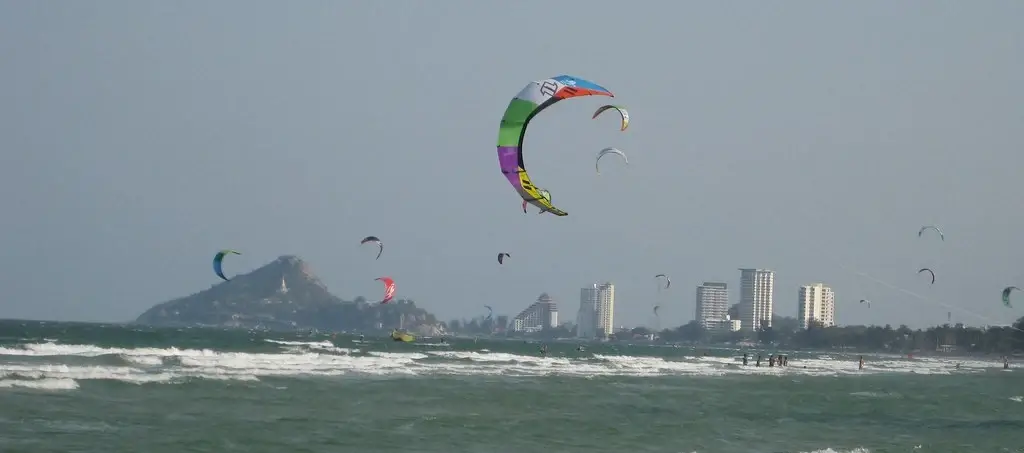
Gulf Location & Thermal Advantages
Thermal breezes build daily once the land heats (~11 am), growing to 15‑20 knots each afternoon from November to April These NE and then SE winds—especially from January through May—are steady, warm, and ideal for freeriding.
Seasonal Climate & Wind Windows
Peak season, October‑May, features consistent winds and water temps of 28–30 °C—no wetsuit required . Rainy season (May‑October) brings offshore gusts and less reliable bites. Still, light wind sessions and foil rides remain possible, albeit not guaranteed .
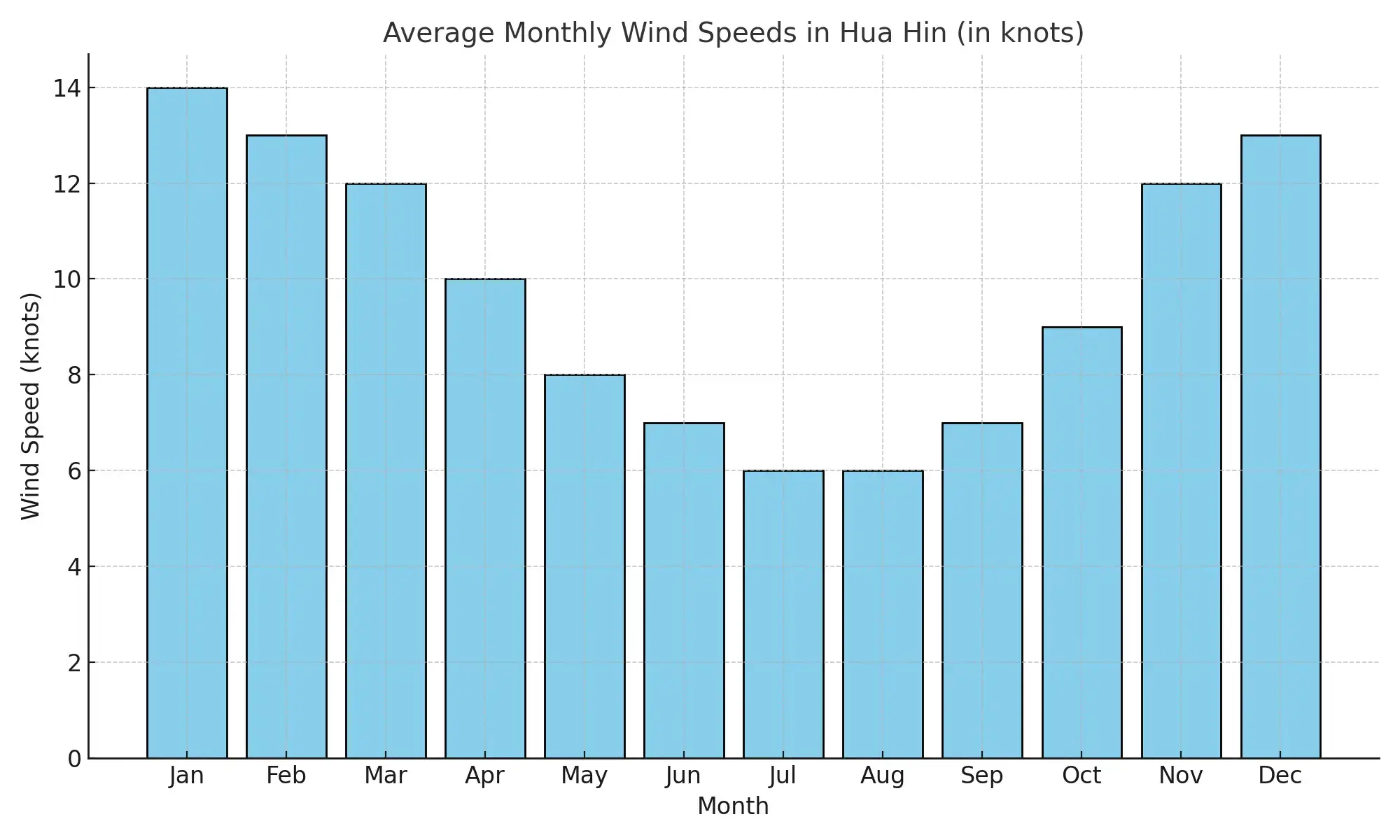
Unique Challenges & Kiter Hacks
High tide (especially Nov‑Mar) can nearly erase beachfront space—kite launch zones shrink or vanish . Savvy kiters head north of KBA toward the Duotone/North Kite club, where sand holds even at peak tide. Plus, jellyfish often enter the bay in March–May and November, prompting gear covers or short wetsuits.
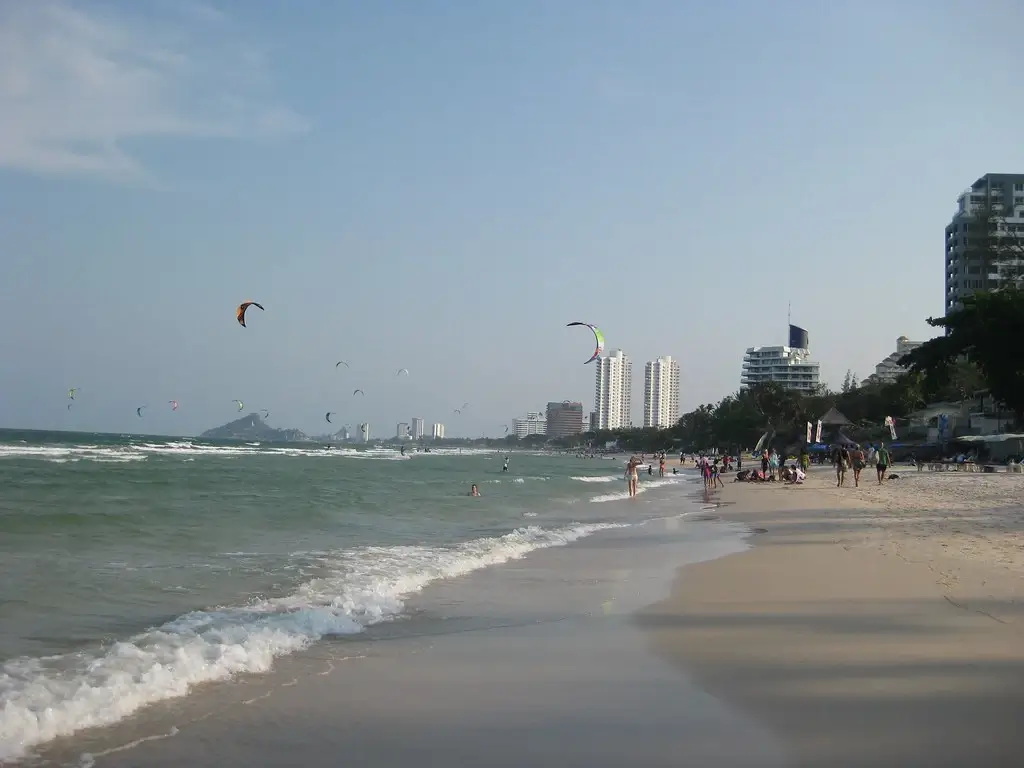
Spot Guide
🏄♂️ KBA Surf Spot (Main Launch Zone)
The heart of Hua Hin kitesurfing, between the Marriott and Khao Takiap. KBA offers multi-lingual IKO-certified instructors and full facilities: gear, beach crew, condos, showers—perfect for beginners and intermediates. Expect 10–20 kt winds, shore break (first half season), and bustling vibe .
🏄♂️ Duotone / North Club Beach
North of the main spot, this quieter launch area offers parking, shade, and beach crew support without the high tide squeeze.
🏄♂️ Khao Takiap Bay Extension
Just beyond the main school zone: flatter water, occasional chop, ideal for Hua Hin flat water kitesurfing or foil excursions. Often less crowded and safe.
🏄♂️ Suan Son Pradiphat
South of the main beach, backed by military-controlled parkland—offering roomy water with fewer tourists and multiple launch points.
🏄♂️ Downwind Runs to Pran Buri
Mid-season thermals fuel long rides south toward Pak Nam Pran, where the Kite Tour Asia event happens around March. Bring a light bar, leash, and sufficient water for this ~10 km run.
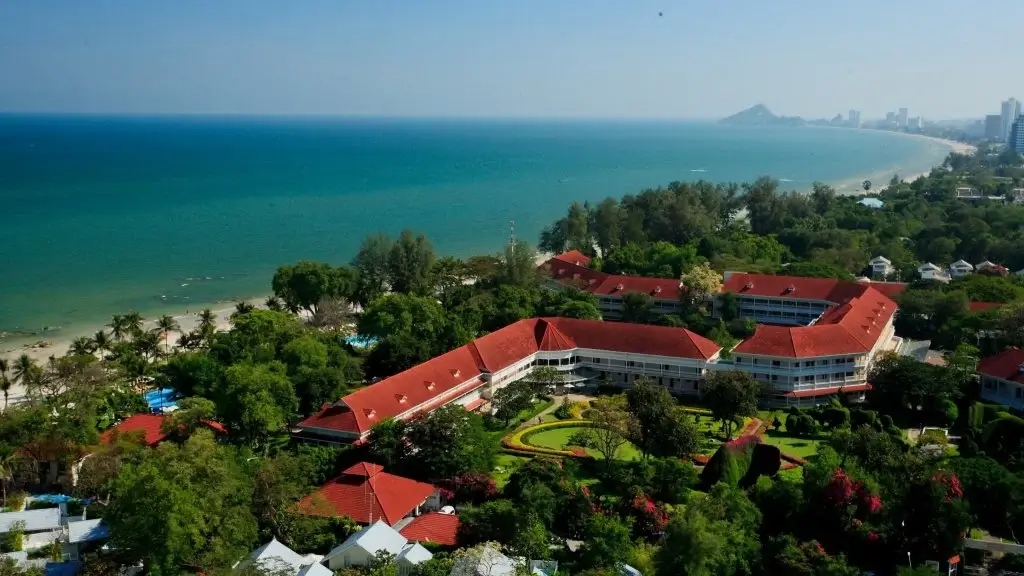
Wind & Weather Analysis
Dry Season Winds (Nov–Apr)
Consistent NE then SE winds—12–25 kt gusts early season, then dependable 10–20 kt thermals after Januari. With predictable afternoon peaks, it’s a reliable light wind kiteboarding foil Hua Hin window.
Rainy + Monsoon Season (May–Oct)
Wind becomes offshore and gusty; thermal breezes drop off. Rain can pause wind production entirely. However, foil and downwinders may still be viable during calm spells.
Tides Impact & Launch Strategies
High tide (Nov–Mar) can inundate beachfront launch zones; low tide (Apr–Oct) exposes sandbanks but can leave deep channels nearshore. Pack multiple launch options—from KBA, North Beach, and south to Suan Son.
Jellyfish & Safety Tips
Red dots emerge March–May and November due to seasonal winds. Wear shorty wetsuit or leggings to avoid stings. Stay vigilant of swimmers, jetskis, horse rides, and beach vendors.
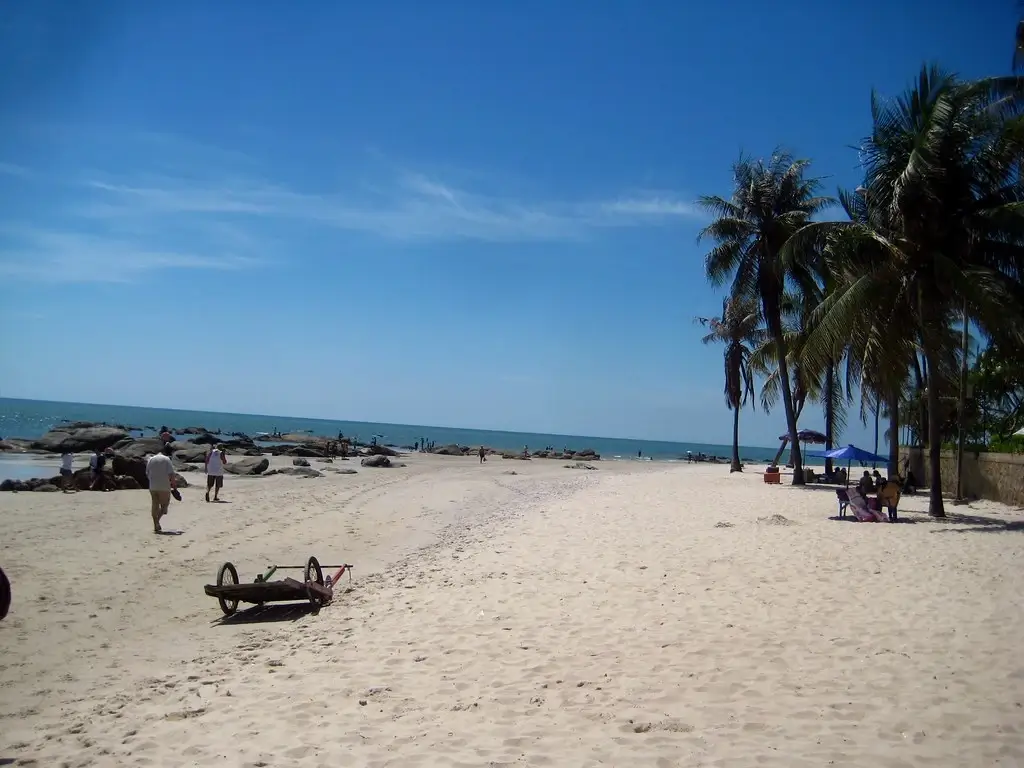
Rider Levels & Gear Advice
Beginners & Low-Wind Riders
KBA school uses 12–16 m kites often; foils are becoming popular in light winds. The flat, shallower zones south of KBA offer ideal staging.
Intermediate & Freestyle
With 15–20 kt NE/SE winds, freestyle and freeride riders can keep 9–12 m kites, enjoying shore break first then flatter afternoons.
Foil & Light Wind Strategy
12–17 m kites are common, especially underpowered early season winds . Hydrofoil boards remain effective during gusty rain-season down days.
Wave Conditions & Board Size
Shore break early-season calls for bigger boards; thermal season still brings chop. Small directional boards (120–140 cm) work well with flat wind.
Kite Schools, Rentals & Safety
Top schools—KBA, Duotone North Club & independent outfits—use IKO-certified systems and multi-lingual staff. Here’s a quick breakdown:
- KBA Kiteboarding Asia: 1‑hour try lesson THB 2,200; 6‑hour beginner course THB 11,000.
- Duotone Club: 2h THB 4,000; full-day and multi-course packages available
- Rentals: 12–17 m kites at ~THB 500‑1,200/hour; compressors, boards, harness led.
Safety features: beach crews, line cutters, rescue chips, basic medical kits (stings and sun). During jellyfish season, suits may be required.
Quick Takeaways
- Ideal season: Nov–Apr, with thermal winds peaking mid‑day.
- High tide shrinks the beach—use south/north launch zones.
- Jellyfish ticks in Nov & Mar–May—wear protection.
- KBA & Duotone schools offer certified instruction & gear.
- 12–17 m kites and foils rule light wind days; 9–12 m for freeride.
- Unique chance to ride to Pran Buri during mid-season thermal runs.
- Beach crowds & goats/horse riders mean vigilance—line cutters essential.
Conclusion
Hua Hin is more than just a beach—it’s a thriving kite community built on predictable thermals, beginner safety, and varied conditions. With one full kite season stretching from November to April and a strong tradition of IKO-certified instruction from schools like KBA and Duotone, it stands as one of the best kitesurfing spots in Hua Hin you can find globally. Seasonal nuances like tidal shifts, thermal transitions, and jellyfish windows add flavor to every trip, while versatile riding options—from foiling flat water to tackling shore break or launching epic downwinders to Pran Buri—ensure something for every kiters’ taste.
Coupled with affordable accommodation steps from launch zones, Thai street food adventures, and a laid-back beachfront atmosphere, Hua Hin feeds your soul on and off the water. So pack your gear (or rent locally), bring sun protection and a line cutter, and time your visit just right—your most memorable kite escape is waiting here.
FAQs
1. When is the best time for kitesurfing in Hua Hin?
The prime wind season runs from November through April, with consistent thermals and 15–20 kt winds—perfect for freeride, freestyle, and foiling.
2. Can beginners learn to kite in Hua Hin?
Absolutely. Schools like KBA and Duotone offer beginner packages with certified instructors and calm shallow zones south of the main beach.
3. What gear should I bring or rent?
Bring your own harness and bar if you can; schools supply 12–17 m kites, compressors, boards. Foil is wise for light-wind days.
4. Is jellyfish season a big concern?
Yes, mainly in March–May and November. Protect skin with a shorty wetsuit or leggings—stings can ruin a session.
5. Can you do a down‑winder from Hua Hin to Pran Buri?
Yes. Mid-season thermal runs enable ~10 km rides south. Pre-book taxis or support, and bring lights, water and GPS.
We’d Love Your Feedback
Thanks for riding along! Drop us a comment below with your favorite Hua Hin kitesurf memory or your own wind hack. If this guide pumped your stoke, share it with your kiting crew—and tag us on Insta when you’re floating downwind from Pran Buri. How many windy days will you catch on your adventure?
